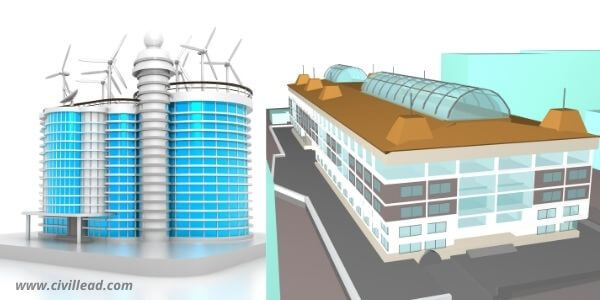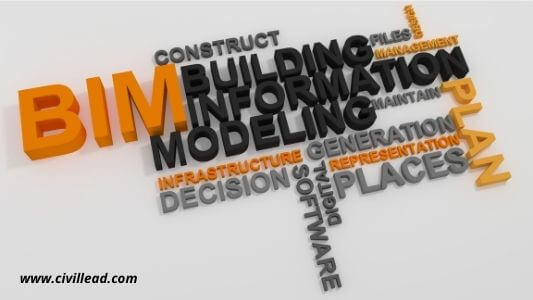Table of Contents
Introduction Of BIM
The construction industry has been rising exponentially in the past decades. Nowadays, it is bigger and more dynamic than ever, employing millions and shaping the face of the modern world.
However, this growth surge has led to new challenges that the industry requires to manage.
From the collaboration between different teams to overall expenses — the industry needs to reinvent itself to maintain its upward momentum.
Thankfully, technological advancements are already providing solutions to those challenges.
The introduction of Building Information Modeling (BIM) instead of traditional CAD software changed the playing field for good.
With easy access to in-depth data, cloud-based functionalities, and improved collaboration, construction professionals can be more productive than ever before.
In this article, we will explain what BIM is and how it will shape the future of the construction industry.
We will provide you with practical insight as to which areas will be affected most, as well as what other opportunities are on the horizon.
What Is Building Information Modeling?
BIM is essentially a 3D-modeling software that functions as a full-service platform for managing all aspects of a construction project.

BIM software is designed to provide tools, data, and insights for each stage of a project — from initial planning and design to execution, maintenance, and even building management.
Modern BIM platforms are based on cloud technology, allowing for real-time data exchange and easy access to information at any given time.
The 3D models generated by BIM are not only extremely detailed — they also contain complex data that can be utilized by all stakeholders in a project.
Even though older software like AutoCad Mechanical is still used, BIM platforms like Revit are quickly becoming the norm across the industry.
From architects and project managers to on-site workers — all construction professionals have much to gain from using BIM.
With such platforms, you can effectively manage risk, resources, construction schedules, and more.
How Will BIM Affect the Construction Industry in the Future?
BIM has already revolutionized the field of construction. However, the software continues to be developed, and new functionalities are becoming available regularly.
Let’s take a look at how BIM will change the field of construction in the years to come.

Better Risk Mitigation
Evaluating and mitigating risk is important for every construction project. BIM software provides the tools and functionality needed to accurately assess a variety of issues, including financial risk, worker safety, design flaws, and scheduling problems.
Project managers can ensure the integrity of every step of the process before the actual construction even begins.
On top of that, cloud-based BIM keeps all information on a project synchronized and up-to-date for everyone involved.
This alone can reduce the risk of miscommunication, which can lead to delayed project delivery and costly remodeling efforts.
As cloud technologies and BIM continue to develop, we can expect to see those aspects being implemented to the fullest in the field of construction.
Lower Overall Expenses
As a direct result of efficient risk mitigation, BIM will also help managers optimize costs across the entire project.
Model-based cost estimation is an automated process ensuring that all calculations regarding materials and resources are accurate.
With no risk of human error, managers will decrease costs by knowing exactly how much they will have to spend.
Additionally, every change in a BIM model will cause the price estimate to update accordingly. That saves time and effort, along with being essential for avoiding mistakes.
Improved Client Satisfaction
BIM tools provide an effective way of ensuring the overall quality of a building. Given that BIM increases the performance of all teams involved in a project, it is only logical that the end result will be of higher quality.
With managers being able to fully test the design of a building before construction even begins, end-clients will get exactly what they paid for, leading to higher customer satisfaction overall.
On top of that, BIM software can be integrated with VR and AR software to allow virtual tours of buildings still under construction.
That would create client presentations of a new generation, with interactive virtual properties that are fully customizable.
You can imagine how such a shift could transform the industry, opening many more possibilities for implementing VR and AR.
Optimized Scheduling and Project Delivery
As we already mentioned, BIM software comes with tools and functionalities that greatly improve project delivery times.
In construction, even a tiny error can result in a project being delayed for several months.
BIM currently allows managers and stakeholders to monitor and optimize every process, ensuring that errors are kept to a minimum, and everything runs according to schedule.
On top of that, BIM automates many of the tedious tasks in modeling and planning, speeding up the entire process.
Perhaps the most common and costly mistake during the design phase is failure to detect clashes and other similar issues.
BIM software uses automated clash detection, which saves time and reduces the possibility of human error.
With automated clash detection as the norm, we can expect to see the average construction time decreased substantially.
Better Building Management
The benefits of using BIM continue even after a project is completed. The data stored in the software can be used by building managers to maintain the building in the foreseeable future.
All information can be conveniently accessed by all stakeholders, making handover and remodeling efforts easier than ever before.
In the near future, BIM software data will be used along with AI and smart home concepts to automate maintenance and detect potential integrity flaws.
Thanks!
Also, Read
What is an HVAC System? How does it Work?
How to Make Your Outdoor Space Cozy and Inviting?
Standard Room Sizes & Their location In Residential Building.
Plumbing Trap – Purpose, 15 types of Plumbing Traps
Parapet Wall – Purpose, Types & Uses